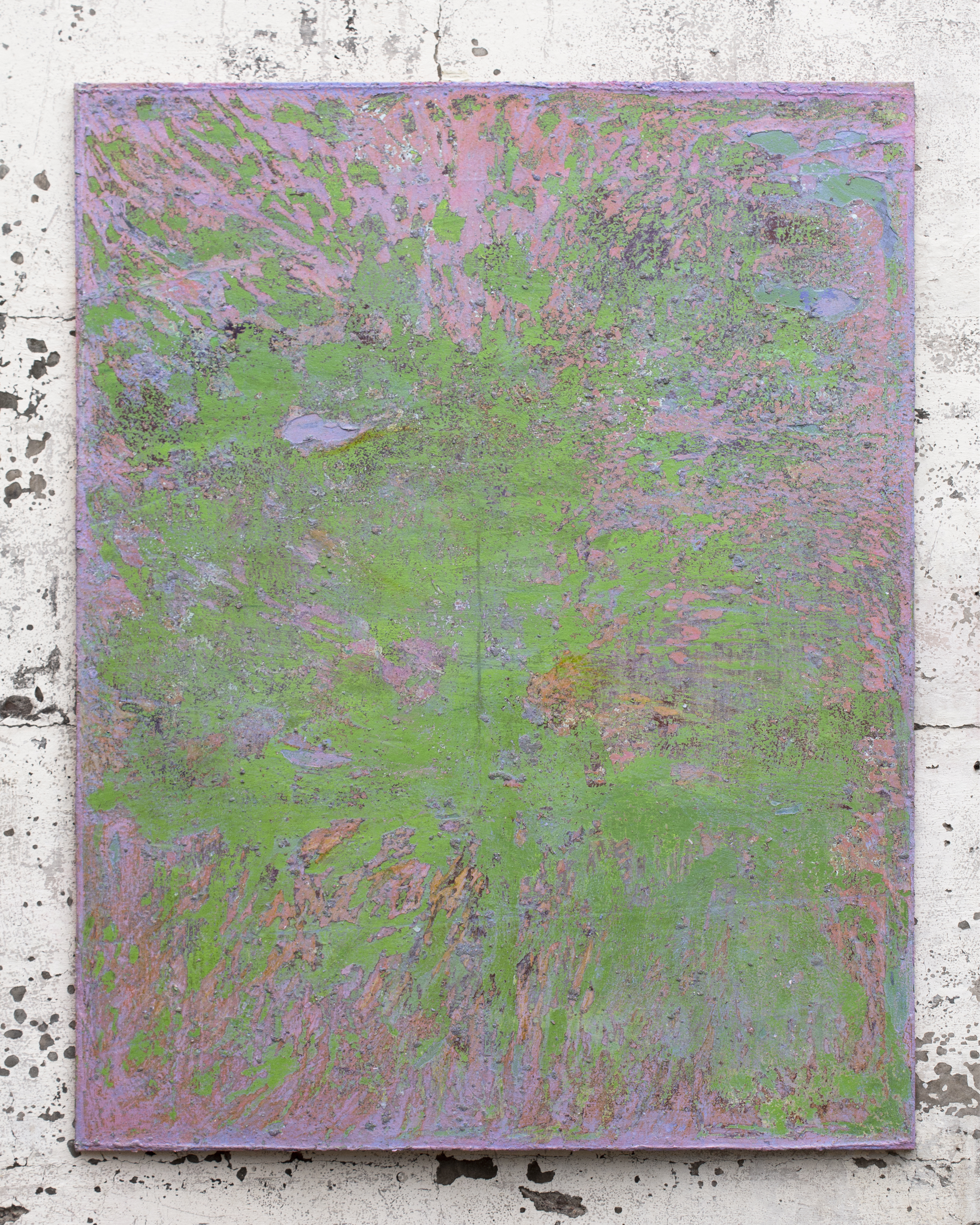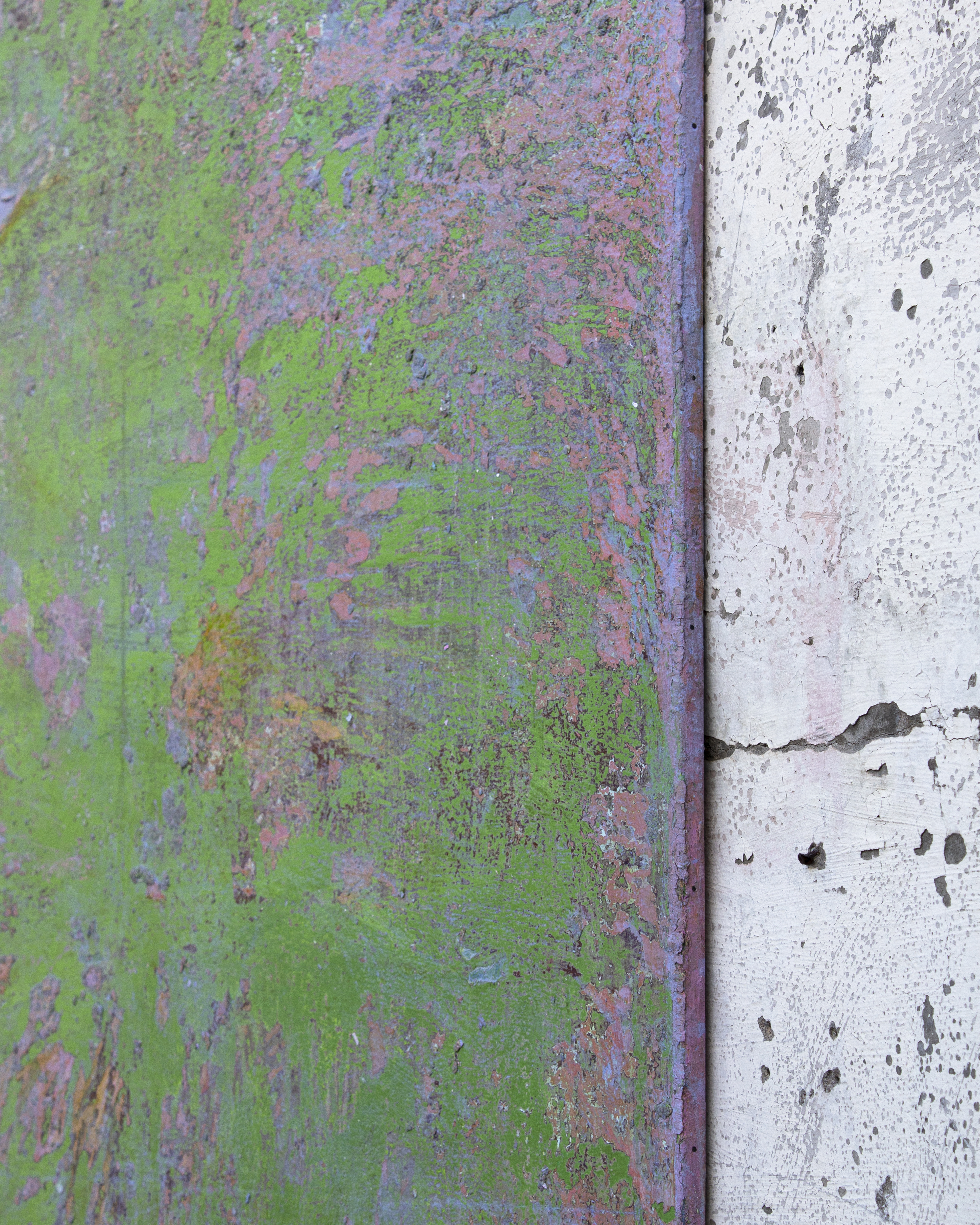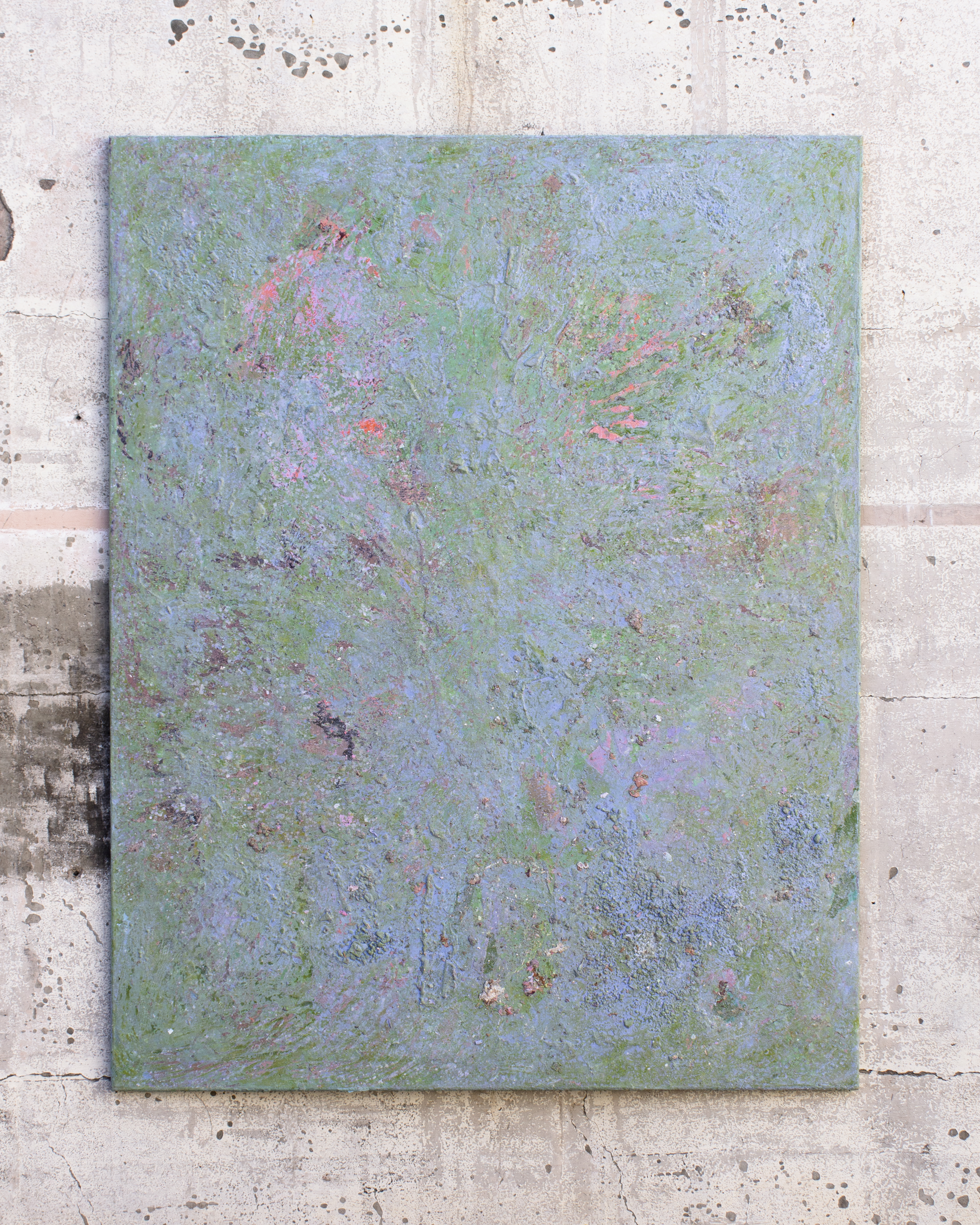


















Luke Brennan
Winter 2022
35°19’06.5”S 149°00’35.3”E
Yale-Columbia Refractor Ruin,
Mount Stromlo, Kamberri/Canberra
︎ View exhibition catalogue
︎ Read exhibition review
_
“PANGS” reflects on the degradation of the body (as spirit, as physical vessel, as painting) brought about through stress, and the more impersonal forces that bring a heavy weight to bear.
A ‘pang’ is anxiety arriving at speed – being sharply felt but always unexpected. They impose upon certitude the “weight of the world”, the fundamental unknowingness of being human, demanding that we reckon with all that confronts us.
Pangs are the animating anxieties that drive us to question and continue, and that which drives Luke to painting. The four large canvases included in this exhibition have haunted Luke like an affliction. Their accumulated surfaces playing witness to a hyper-curious and heavily-physical engagement by the artist.
What we see is the effluence and decay of these manic interactions
accumulated surfaces have played witness to a curious and melancholic engagement by the artist. What we see is the effluence and decay of their interactions: the body of the painting firstly nourished with attention, then flushed away. What remains is the ordure (manifest as muck, filth, waste, shit, rubbish and pollution) of some internal anguish, the emotional silt that has ultimately settled in a fetid pool of physical disorder, an organic continuum fixed in a satin-like skin set-hard like mud in the sun – a “primordial mud” – harbouring in its decay the richness and precariousness of all life.
_
“When the waters retreated, a deep layer of warm mud covered the earth. Now, this mud, which harboured in its decay all the enzymes from what had perished in the flood, was extraordinarily fertile: as soon as it was touched by the sun, it was covered with shoots from which grasses and plants of every type sprang forth; and, further, its soft, moist bosom was host to the marriages of all the species saved in the ark. It was a time, never to be repeated, of wild, ecstatic fecundity, in which the entire universe felt love, so intensely that it nearly returned to chaos.
Those were the days when the earth itself fornicated with the sky, when everything germinated and everything was fruitful. Not only every marriage but every union, every contact, every encounter, even fleeting, even between different species, even between beasts and stones, even between plants and stones, was fertile, and produced offspring not in a few months but in a few days. The sea of warm mud, which concealed the earth’s cold, prudish face, was one boundless nuptial bed, all its recesses boiling over with desire and teeming with jubilant germs.
This second creation was the true creation, because, according to what is passed down among the centaurs, there is no other way to explain certain similarities, certain convergences observed by all. Why is the dolphin similar to the fish, and yet gives birth and nurses its offspring? Because it’s the child of a tuna and a cow. Where do butterflies get their delicate colors and their ability to fly? They are the children of a flower and a fly. Tortoises are the children of a frog and a rock. Bats of an owl and a mouse. Conchs of a snail and a polished pebble. Hippopotami of a horse and a river. Vultures of a worm and an owl. And the big whales, the leviathans—how to explain their immense mass? Their wooden bones, their black and oily skin, and their fiery breath are living testimony to a venerable union in which—even when the end of all flesh had been decreed—that same primordial mud got greedy hold of the ark’s feminine keel, made of gopher wood and covered inside and out with shiny pitch.”
— Primo Levi, ‘Quaestio De Centauris’, 2015
_
Luke Brennan is a visual artist whose work germinates within the constructs of painting. He uses organic materials and biomorphic forms to cause disruptions in the flat surface of the painted picture. Repeated cycles of creation and reduction obliterate any trace of the artist, and all evidence of process. The painting appears degraded, singular and densely layered, as if a relic, its definition loose and its origins undefined.
Luke Brennan lives and works in Sydney/Eora, Australia. He graduated from the Sydney College of the Arts with First Class Honours in 2018 and has presented in a number of solo and group shows in Sydney, Melbourne, and Europe. This is Luke’s second solo exhibition in Canberra/Kamberri, and the inaugural exhibition of Al Fresco.